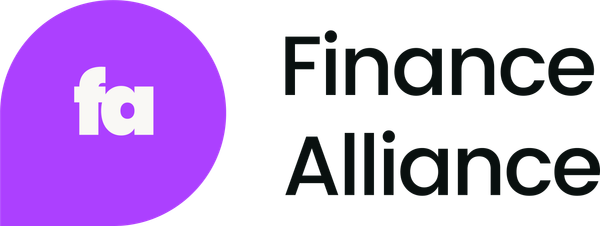Are your existing planning, budgeting, and forecasting processes looking a little… worse for wear?
Dealing with mountains of datasets isn’t easy. There’s only so much a finance professional can handle before they need some help. Thankfully, there is an excellent solution to the problem.
Technology is transforming financial planning and analysis (FP&A) in ways that have transformed traditional planning, budgeting, and forecasting processes. But how?
In this post, you’ll discover how technology is impacting the budgeting function and modernizing how finance professionals work.
Keep reading to learn:
- How companies leverage technology to strengthen their planning, budgeting, and forecasting functions
- How to avoid common mistakes
- Building the possibility for higher-value activities: The 3 C’s
- Four planning, budgeting, and forecasting trends to watch
- Three business case examples of leveraging technology for FP&A
- How to get buy-in from stakeholders
- How organizations can adapt to change
How technology can transform your budgeting processes
Automation and technology have made our lives so much easier and more convenient. Yet, many organizations miss out on the opportunity to improve their budgeting processes by utilizing technology the right way.
When it comes to the traditional budgeting process, three major complaints often arise:
1. It takes a long time, costs too much, and consumes too many corporate resources.
2. It’s fixed and inflexible and can quickly become irrelevant.
3. Most companies tie executive and employee compensation directly to performance against the budget.
What many businesses don’t know is that none of these issues are impossible to fix. Instead of typing budgeting data into spreadsheets, technology can take the burden of mundane tasks off your plate.
Technology can build systems that sync with the general ledger. Data can be almost instantly loaded exactly where you want it – all while improving accuracy and reducing potential errors.
With automation, you won’t have to worry about irrelevant or outdated data clogging up your spreadsheets. Your planning, budgeting, and forecasting data is reported in real-time.
Budgets may not be going away, but technology can make the process a lot easier.
How to avoid common finance transformation mistakes
Finance transformation relies on innovative technology to reconstruct and install more effective and efficient planning, budgeting, and forecasting functions.
One mistake to avoid is setting too broad a goal, such as having a “best-in-class” budgeting function. This kind of thinking leads to a line-up of potential problems, including:
➢ Solely focusing on costs alone
Tunnel vision for the cheapest options may not be the best way forward.
➢ Not fully understanding business complexity
You need a strong understanding of the business, how it operates, and the industry it operates in.
➢ Seeking universal satisfaction
You can’t please everyone!
So, how can you avoid making these mistakes? And, how can you move towards a successful implementation of finance transformation?
First, it’s important to have a clear and concise vision. Think about what a successful adoption of finance transformation looks like for you.
What do you hope to achieve? What do you want to change or improve? Zone in on your vision and make sure you can share that vision with others when necessary.
Next, make sure you're focusing on the right areas and outcomes. Your organization should focus on return on investment (ROI) rather than minimizing cost.
Consider what you’ll gain from this movement toward finance transformation. Some possibilities include more accurate planning, budgeting, and forecasting strategies and increased productivity.
Another important aspect of finance transformation is setting goals and deciding what to stop doing. Consider what technology and budgeting and forecasting software to invest in. There are many options to choose from, many of which can help improve your existing business planning and strategic planning processes, for example.

Building the possibility for higher-value activities: The 3 C’s
I’m a huge believer in the ‘3 C’s:
- Capacity
- Capability
- Collaboration
If you don't have the capacity, you have nothing. If it takes 30 days to do the accounting close, that’s all you’ll get done in those 30 days. But, if you hire the right people and leverage technology, you can reduce the time it takes to complete those tasks.
The next question to ask yourself is if your people and technology have the capability. If you’ve got the capacity and capability, you can collaborate.
Building change starts from within. If you want to change, you must own it. You’ve also got to manage your business partners’ expectations. By trying to please everyone, you may end up pleasing no one.
It’s very important to realize and embrace finance transformation as an ongoing process and not a one-off exercise.
Planning, budgeting, and forecasting trends to watch
Robotics will take over more planning, budgeting, and forecasting operations
Working smarter with robots is on the horizon for finance teams around the world. And don’t worry, they’re not coming for your job!
Benefits:
- Reduced cost
- More automated handling of routine tasks (cash flow management, monthly or quarterly forecasts, rolling forecasts, and other financial and operational tasks.)
- Higher productivity
- Fewer errors
- More time for strategic activities
- More responsive to regulatory, compliance, and risk issues
Challenges:
- Skill sets of the finance team and overall workforce will need to shift
- Machine-to-human interaction is still evolving
Budgeting processes and technologies will continue to evolve
Budgeting processes and technologies will continue to evolve and include:
- Advanced analytics and forecasting
- Robotic process automation
- Cloud and SaaS
- Machine learning
- Artificial intelligence
- Blockchain
Benefits:
- More relevant and accurate data supports better planning, budgeting, and forecasting
- More frequent updates
- More flexible tools for data-driven forecasts
Challenges:
- Concerns over scrapping traditional planning, annual budgeting, and long-term forecasting processes
- Difficulty recruiting team members with the skills needed
Business case examples of leveraging technology for planning, budgeting, and forecasting
If you’re wondering how businesses leverage technology and planning software to streamline processes across the finance function, here are three business case examples:
Example 1
Who?
- One of the ‘Big 10’ universities
- 50k students, 12k Faculty
The Challenge
- Budgeting Technology was antiquated
- Business processes had been created around inefficiencies in the technology
- Retiring System Administrator
- VP of Finance has seen IBM advertisements on TV showing people ‘shooting analytics from their fingertips’
The Solution
- Implement IBM Planning Analytics
- Define ideal state business processes, and build the technology to suit

Example 2
Who?
- National convenience store and gas retailer
- 800+ locations, HQ in Tulsa, OK
- 20,000 employees
- Fortune Magazine “Best Companies to Work for” 14 years in a row
- Strong service culture
The Challenge (2014)
- All financial planning and reporting in Excel
- The delay in receiving useful information was so great that the information was no longer useful
- Data blind
The Solution
- Implement corporate performance management processes
- Leverage IBM® Cognos® TM1® (now known as planning analytics)
- Workforce performance management & planning
- Annual financial budgeting
- Monthly & annual financial reporting
The Results
Information is now:
- Visible
- Timely
- Accurate
- Reliable
- Dissectible
- Trusted
Example 3
Who (2010)
- A low-cost airline
- 10-15 aircraft flying the “Triangle” (BNE/SYD/MEL)
The Challenge (2010)
- Australian domestic airline market has two dominant players
- Ansett (30 % market share) goes into liquidation
- The airline expands rapidly to fill a market gap
- Company is still being run like a startup
- Finance & some operations run on Excel spreadsheets
- Budgets are being changed mid-year
- Reports are completely untrusted and open to adjustment
- Decision makers have no control over the results they see
- A multi-billion dollar company being run like a startup
The Solution
- Implement IBM® Cognos® TM1®
- New CFO
- “If it’s not in TM1, it doesn’t exist”
- Driver-based budgeting
- Performance managed to plan ratios
TM1 Models Built:
- Financial budgets
- Financial reporting
- Flight reconciliation
- Heavy maintenance planning
- Route profitability
- Catering planning
- Demand planning & pricing
- Workforce planning

Finance transformation: How to get buy-in from stakeholders
There are many ways of increasing the chance of gaining buy-in from relevant stakeholders.
But first, you’ve got to identify who your key stakeholders are. Once you know who you need to convince, take time to identify their specific needs and requirements.
Then, you must engage their head, heart, and hands:
The Head: With communications that are explicit and inclusive.
The Heart: Stakeholders will come to believe that finance transformation is the right action for the organization.
The Hands: Stakeholders and support teams must be competent to bring the finance transformation into being.
It’s also important to get support from senior management and make conscious efforts to track and measure progress.
Lack of buy-in from senior management is one of the main reasons finance transformations fail. Making sure they are on board is critical.
How organizations can adapt to change
Success at finance transformation demands more than the best strategic and tactical plans. It requires an intimate understanding of the human side as well.
Change is inherently unsettling for people at all levels of an organization. But, organizations that work well together, that are aligned and committed to the transformation initiative, are best positioned for success.
Remember that individuals are inherently rational. They're likely to question to what extent the transformation is needed. They'll also consider whether the company is headed in the right direction and whether they want to personally commit to it.
The best way for an organization to adapt to change is with well-planned, consistent communications that go both ways.
Here are a few more tips to help your organization modernize and adapt to a fast-changing, technological environment:
- The most successful transformation initiatives reinforce core messages through the delivery of timely and regular updates.
- Communication needs to be both outbound and inbound.
- Organizational change requires communication through multiple, redundant channels.
Key takeaways
- Finance transformation relies on innovative technology to reconstruct and install more effective and efficient financial planning and analysis (FP&A) processes.
- Avoid basing your budget requests on realistic assumptions - this could lead to decreased funding.
- You need the 3 C’s to implement finance transformation successfully: capacity, capability, and collaboration.
- To get buy-in from stakeholders, you must engage their head, heart, and hands.
- The best way for an organization to adapt to change is with well-planned, consistent communications that go both ways.
For organizations to survive, they must embrace finance transformation, which is why we're launching the State of Finance Transformation Report 2022!
Get the story behind the data and discover how a successful adoption of finance transformation can drive positive change within your organization.
But we can't create this report without your help. Take the survey today.



 Follow us on LinkedIn
Follow us on LinkedIn




